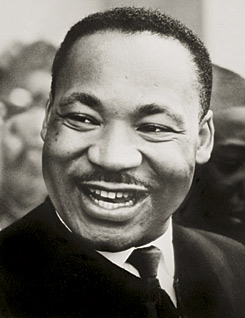
Does it take more than an awkward fashion statement to be a modern hero? Is it even something we can see so plainly on a person, or something deeper?
Being a hero is not normally on a daily to-do list, but the idea represented in Campbell's writing is very similar to a positive process of self-change, which we deal with on a daily basis.
Separation refers to the time when "A hero ventures forth from the world of common day into a region of supernatural wonder"(10). Now, let's redefine a few words in this sentence in order to refine the context in which we refer to the hero. "Hero"- you. "The World of Common Day"- the realm of mundane, everyday occurrence or feeling, a comfort zone. "A region of supernatural wonder"- change, of any kind. So basically, the phase of separation is where we are separated from our familiar selves. This occurs multiple times throughout our lives, be it adolescence, the college years, middle age crisis, or even losing/finding love for the first time ("rites of passage"(10)).

Separation from familiarity includes positive feelings, like love. Like grief and hardship, they must still be controlled.
During initiation, "fabulous forces are... encountered and a decisive victory is won"(10). This illustrates a sense of understanding we develop with ourselves. After all, what supernaturally wonderful enemy is more frightening than the one we cannot understand? And what is more frightening than realizing that that enemy is you, and only you can find the answer? This presses heroic responsibility on us. Initiation is all about finding the strength and understanding of ourselves that was in ourselves for so long. Often a hero has a power or talent that is unlocked only during his adventure. Much like Hercules, Aeneas, and every video game character we've ever impersonated, we have a skill to unlock, and that's intrapersonal communication. In one of my favorite childhood videogames, Zelda, we played as a young boy named Link. One of the most perplexing opponents in the game was Shadow Link. He was simply a mirror image of the player, and copied his moves almost exactly. It is very symbolic of what we constantly battle.
Link and Shadow Link at war.
Intrapersonal communication in turn only benefits our interpersonal communication. Until we understand ourselves, we cannot possibly begin to advise others in similar situations. During the return phase, "the hero comes back from this mysterious adventure with the power to bestow boons upon his fellow man"(10). These "boons" are simply pieces of advice, understanding actions, and the power to speak with experience. Think of a patient who survived Cancer- they are automatically deemed a hero, and their words of inspiration in a medical anthology are much more powerful than that of someone who has never been seriously ill. One who has never been ill (a philosopher) can only conjecture about what the cancer patient has experienced and defeated. A less rare example is a college graduate. After your great struggle with the higher education system, professors, and homework, your words become valued.

The book "Combat Surgeon in Vietnam" by Dr. Andrew Lovy is a great example of the respect gained through experience, schooling, and hardship.
In this way we can relate two stories as apparently opposite as the story of Buddha's suffering and the Great Greek Heroes. The Greek legends are simply an easily spoon fed version of the more complex concepts Buddha found. Just as "Jason... circumvented the dragon that guarded the Golden Fleece"(10), Buddha circumvented worldly desires in order to reach Nirvana.

Nirvana can be found everywhere! Under trees, behind Dragons...
Conclusively, you are a hero! Unfortunately, your trials will never end. And that, is the meaning of life.



















 Teen angst stems from the "soul search" associated with new freedoms.
Teen angst stems from the "soul search" associated with new freedoms.


 Gandhi fasted for Peace in order to protest the partition.
Gandhi fasted for Peace in order to protest the partition. Dr. King was a man immersed in and enthusiastic about his work- two great steps towards success."
Dr. King was a man immersed in and enthusiastic about his work- two great steps towards success."

 An aerial view depicts the tall gables and ornamented windows.
An aerial view depicts the tall gables and ornamented windows. One tower on the left rises above the others.
One tower on the left rises above the others. Tall arches are once again present in prayer rooms, perhaps encouraging the same humbling sensation that Gothic architecture does.
Tall arches are once again present in prayer rooms, perhaps encouraging the same humbling sensation that Gothic architecture does. Ornamented, yet simple.
Ornamented, yet simple.



